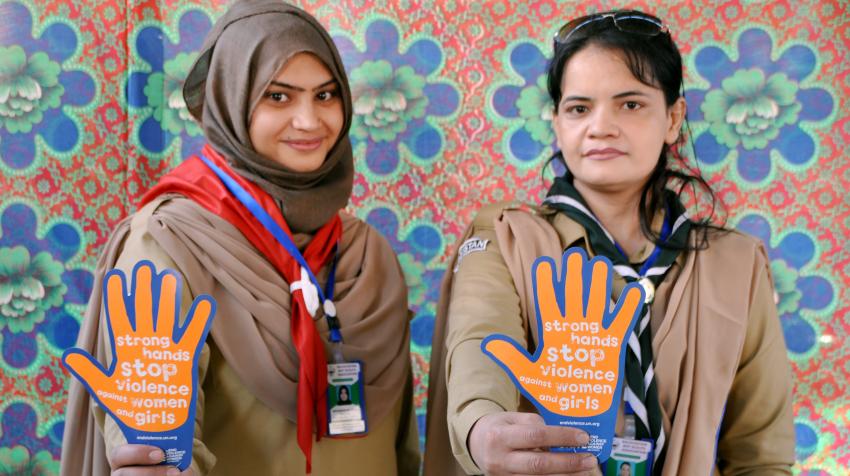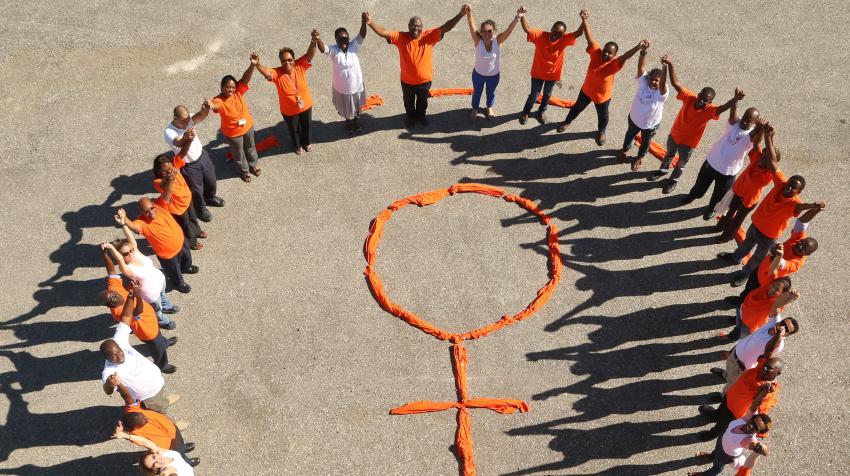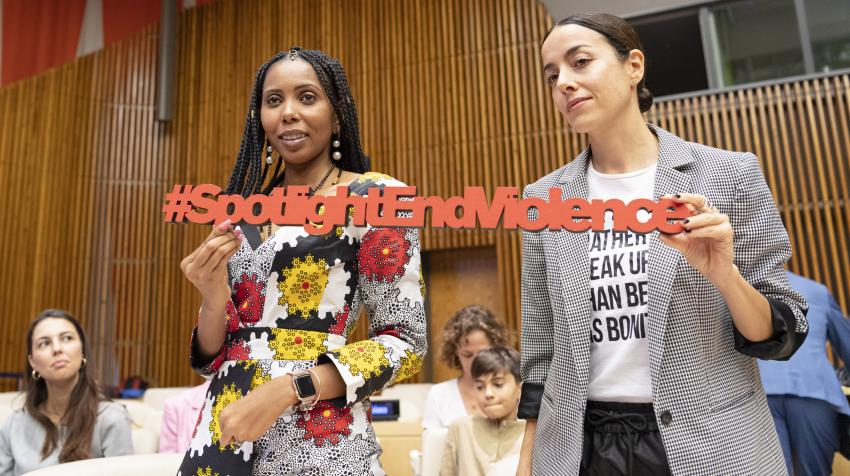25 November 2019
Over the past 25 years, significant progress has been made towards eradicating violence against women but much more remains to be done. Women’s rights movements, and the implementation and evolution of the international women's human rights framework, resulted in an increased understanding that violence against women is gender-based, a form of discrimination and a violation of human rights. My mandate as United Nations Special Rapporteur on violence against women, its causes and consequences has contributed to that process. The prohibition of gender-based violence against women has evolved into a principle of customary international law and, as such, is binding on all States. Today, the main challenges are the lack of full protection of women’s rights as human rights, coupled with the lack of integrated laws and policies against such violence and the absence of comparative data on different forms of gender-based violence against women.
We need to focus on the implementation of international obligations and recognize the contributions provided by independent women’s human rights expert mechanisms, such as the Committee on the Elimination of Discrimination against Women, the Working Group on discrimination against women and girls, and the mandate I hold, as well as other regional women's human rights monitoring mechanisms. There is a need for stronger support of the monitoring bodies mandated to implement the commitments on gender equality, the empowerment of women and the elimination of all forms of violence against women. These commitments are also explicitly recognized as necessary for achieving the 2030 Agenda for Sustainable Development, especially Sustainable Development Goal (SDG) 5 on gender equality and the empowerment of women and girls. They are also included in the Convention on the Elimination of All Forms of Discrimination against Women (CEDAW) and the Declaration on the Elimination of Violence against Women.
Allow me to briefly introduce the mandate of Special Rapporteur on violence against women, its causes and consequences. Established in 1994 by the then United Nations Commission on Human Rights, this mandate was the first mechanism created to eliminate violence against women, its causes and consequences, and integrate the issue of violence against women into the United Nations human rights system. Based on these premises, this mandate focuses on addressing the human rights obligations of States parties, including the due diligence obligation to prevent and combat acts of violence against women and girls, whether perpetrated by States, non-State actors or individuals, including domestic violence. The mandate functions within the United Nations human rights framework, which includes the United Nations Declaration on Human Rights, CEDAW, the Declaration on the Elimination of Violence against Women, and the Beijing Declaration and Platform for Action, as well as relevant regional instruments.
Over the last 25 years, this mandate has served as a catalyst for elaborating recommendations on preventing and combating violence against women and girls from a human rights perspective, including through thematic and country visit reports and the interpretation of States obligations under international and regional legal frameworks. During my tenure, I have also addressed new and emerging forms of violence, such as online violence against women, violence against women in politics and during elections, and mistreatment and violence against women during childbirth, including obstetric violence, which was defined as a human rights violation for the first time in my report presented to the United Nations General Assembly in October 2019.[1]

In terms of standard-setting and as a response to the long-running debates on the adequacy of the international human rights framework with regard to violence against women, in 2017, the mandate, jointly with the CEDAW Committee, adopted CEDAW General Recommendation No. 35 on gender-based violence against women, updating General Recommendation No. 19 of 1992. The new General Recommendation provides the most advanced standards for addressing violence against women and a road map for its prevention and eradication. My mandate’s active role in the drafting of this General Recommendation represented the first example of formal collaboration between a treaty body and a special procedure mandate holder. The CEDAW Committee and my mandate are now planning to elaborate its Implementation Guide.
In 2018, in response to the need for the United Nations system-wide approach to addressing violence against women, I launched a platform of cooperation between United Nations and regional independent expert mechanisms on violence against women and women’s rights, with a view to accelerating implementation of the international and regional legal framework on violence against women. The platform is composed of the Special Rapporteur on violence against women; CEDAW; the Inter-American Commission on Human Rights Rapporteur on the Rights of Women; the Working Group on the issue of discrimination against women in law and in practice; the African Commission on Human and Peoples’ Rights Special Rapporteur on the Rights of Women in Africa; the Committee of Experts of the Follow-up Mechanism to the Belém do Pará Convention; and the Council of Europe Group of experts on Action against Violence against Women and Domestic Violence. The platform has adopted several joint statements and, by speaking with one voice on topics of common concern, it has become an effective tool for raising awareness about issues affecting women and girls worldwide.
While in some parts of the world women feel more empowered and are more willing to fight for their rights, elsewhere women remain silent due to social stigma and lack of a supportive environment in which they can report acts of violence committed against them.
Recently, both at the regional and international level, we have witnessed an increased awareness of women’s rights but also the persistence of gender-based violence against women and girls across all layers of society. Movements that spread through social media, such as #MeToo, #NiUnasMenos and #BreaktheSilence, have revealed and brought to the forefront many forms of sexual harassment and gender-based violence that women face worldwide. While in some parts of the world women feel more empowered and are more willing to fight for their rights, elsewhere women remain silent due to social stigma and lack of a supportive environment in which they can report acts of violence committed against them. We are also witnessing a significant backlash against women’s rights and the rise of “anti-gender movements”, confirming the endemic and widespread nature of violence against women, its power base, and the normalization and tolerance of such violence in all areas of public and private life.

Despite the evolution of the international peace and security framework, including the adoption of United Nations Security Council resolution 1325 on women, peace and security, and the increased awareness of sexual violence against women in periods of conflict and peace, we have not seen a reduction of gender-based violence in conflict. This is partly due to the lack of focus on the root causes and consequences of this form of violence, but also results from the lack of a stronger connection between the implementation of resolution 1325 and the general human rights framework for women.
An analysis of intimate partner homicide data reveals that more than 80 per cent of the victims of these killings are women.
The lack of comparative data on violence against women is hampering initiatives on prevention and contributing to the normalization of violence. An analysis of intimate partner homicide data reveals that more than 80 per cent of the victims of these killings are women. In 2016, in order to address this horrific form of violence, I launched a femicide watch initiative, calling on all States to establish an observatory on femicide and violence against women and to publish and analyse relevant data every year.
I have called on all States to use the International Day for the Elimination of Violence against Women (25 November) to publish data on femicide and to focus on its prevention.
I believe that we must use the momentum created by the Beijing+25 review and the five-year review of progress towards SDG 5 in 2020 to develop a new United Nations system-wide approach to eliminating violence against women and girls. We should also integrate the platform for cooperation between United Nations and regional mechanisms on violence against women and women’s rights into the United Nations system and connect it to multiagency efforts to achieve gender equality. The United Nations Commission on the Status of Women, as the primary intergovernmental body examining the implementation of the Beijing Declaration and Platform for Action, should place violence against women as its standing agenda item and become an implementation body that regularly examines progress achieved
Notes
[1] A/74/137. Available at https://digitallibrary.un.org/record/3823698?ln=en#record-files-collapse-header.
The UN Chronicle is not an official record. It is privileged to host senior United Nations officials as well as distinguished contributors from outside the United Nations system whose views are not necessarily those of the United Nations. Similarly, the boundaries and names shown, and the designations used, in maps or articles do not necessarily imply endorsement or acceptance by the United Nations.




